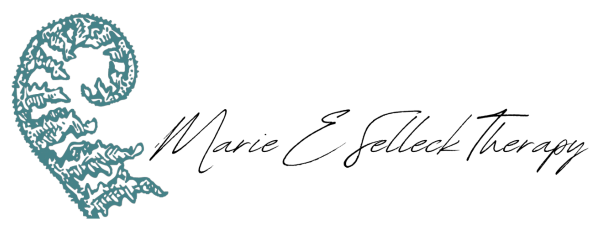Brainspotting Therapy in
Grand Rapids, MI
Unlock deeper healing
What is Brainspotting?
If you have experienced the benefits of talk therapy, but feel there's still something deeper to address in your body, you are not alone.
Many find that traditional counseling helps them understand their thoughts and behaviors, but does not quite reach the core of their issues and why they continue to have them. That lingering sense that there is more to uncover often points to experiences stored in the body and what we call the “deep brain.” This is where brainspotting therapy comes in – a powerful approach that can help you access and heal those deeper layers through your eyes and where you look.
Brainspotting is a neuroscience backed approach that was discovered by Dr. David Grand in 2003 through his work in EMDR. It taps into your brain's natural ability to heal and is based on the idea that where you look affects how you feel.
Our eyes directly connect to the deep brain, and 80% of sensory information is processed visually. Think of your visual field as a map of your inner experiences. Certain eye positions, or "brainspots," connect to emotional and physical issues stored in your brain and body that you cannot access with speech. By finding and focusing on these spots, we can process trauma, anxiety, and other challenges at their roots.
This method combines some elements of traditional talk therapy with brainspotting techniques and other body-based approaches. It's a gentle yet profound way to work through challenges that may have felt stuck or unresolvable through other methods.
As a Certified Brainspotting Practitioner with over 400+ hours of practice, I offer brainspotting to help clients move toward lasting healing.
How Does Brainspotting Work?
During a brainspotting session, we will work together to identify the issues you want to address. We’ll find a “brainspot” associated with a specific concern, and you will focus your gaze on that spot. As you do this, I will guide you to pay attention to any physical sensations, emotions, or memories that arise.
The process is collaborative and empowering. You are in control, and I am here as your therapist to support and guide you. We will move at your pace, allowing your brain and body to do the processing in their own way. If anything feels uncomfortable or overwhelming, we can pause or shift our approach at any time.
Why Choose Brainspotting?
Efficiency: Brainspotting can often lead to rapid and long-lasting changes, even for long-standing issues. Some issues can be resolved in just one session
Depth: It accesses deep, subcortical regions of the brain where trauma and emotional pain are stored.
Gentleness: While powerful, Brainspotting is often experienced as less overwhelming and disrupting than other trauma-focused therapies such as EMDR and exposure therapy.
Flexibility: It can be used alongside other forms of counseling or integrated into ongoing therapy.
Empowerment: Brainspotting puts you in the driver's seat of your healing journey. You lead, the therapist follows
What Can Brainspotting Help With?
Brainspotting is a somatic therapy approach that can address a wide range of psychological and physiological issues. The following list is not exhaustive. Because Brainspotting works with your brain's innate healing capacity, it can be beneficial for many different challenges
Trauma and PTSD
Pre-verbal attachment wounds
Anxiety and depression
Phobias and fears
Relationship issues
Addiction and substance abuse
Grief and loss
OCD
Self-esteem and confidence issues
Physiological issues that may be the outcome of stress such as headaches, gastrointestinal issues, and inflammation
Is Brainspotting Right for You?
Finding Support in Grand Rapids
If you are reading this, you're likely seeking change in your life. Maybe you've tried other approaches and haven't found the relief you’re looking for. Or perhaps you're new to therapy in Grand Rapids and are drawn to Brainspotting’s unique approach. Brainspotting could be a good fit if:
You are dealing with trauma, anxiety, depression, or other emotional challenges
You are looking for a therapy that honors both your mind and body
You want an approach that allows for deep healing without necessarily requiring extensive verbal processing
You are open to trying a body-based therapeutic technique
The best way to know if Brainspotting is right for you is to give it a try. I offer initial consultations where we can discuss your needs and see if we're a good fit to work together. My office is conveniently located at 4829 E Beltline NE, Suite 303, in the Northview area, serving Belmont, Rockford, Ada, and surrounding communities.
Questions You May Have About Brainspotting
-
A: Prior to any in-person sessions, I’ll explain the process and answer your questions. Here’s a general outline of what it might look like:
We'll start by discussing what you would like to work on in any particular session
We'll identify a specific issue or feeling to focus on.
Using a pointer, I'll guide your eyes across your field of vision. We'll pay attention to any shifts in your emotional or physical state.
When we find a brainspot that resonates with your issue, we'll pause there.
I'll support you as you focus on that spot and allow whatever comes up to process naturally.
We'll continue this process, following where your brain and body lead us.
At the end of the session, we'll discuss your experience and any insights or changes you've noticed.
-
A: Absolutely. Brainspotting is effective both in-person and virtually. There may be some slight changes in strategies used, but this does not impact effectiveness.
Recent Blog Posts
Brainspotting Therapy in Grand Rapids, MI:
4829 E Beltline NE, Suite #303,
Grand Rapids, MI 49525












